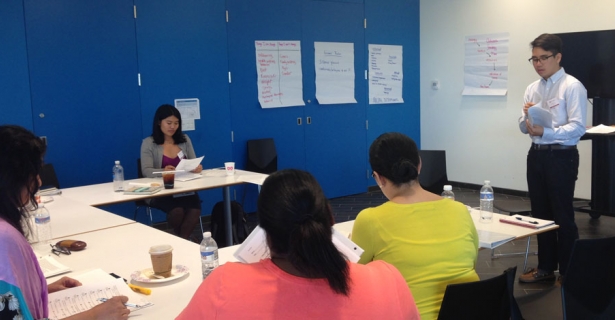I am nearing completion of my internship at the Dana-Farber Cancer Institute for Dana-Farber’s Mammography Van (DFMV). The last time I blogged about my experience, we were planning a visit to bring mobile mammogram screening services to The Sharewood Project in Malden, MA. Due to various circumstances, that event was cancelled, but a new partnership with the Malden YMCA was established to replace the lost services. Staying true to the “ACE Project” this partnership allows Dana-Farber to access patients in a new region of the greater Boston area that was not previously serviced. Most patients in the Malden/Medford/Everett area are currently served by Cambridge Health Alliance (CHA) and its affiliates with the nearest community health centers located 40-55 minutes away. The area is also home to a largely diverse population of Spanish, Portuguese, and Chinese speaking patients who will hopefully be better served by Dana-Farber’s multilingual and highly diverse staff. I’m excited for this September 14th event!
Another piece that I’ve worked on during my tenure at Dana-Farber is the Community Profile Report (CPR) and a provider guide to be distributed to physicians in the greater Boston area. In my previous check-in, I wrote about the cost-effectiveness of employees being compensated for the time off required to receive preventative medical services versus the benefits of post-diagnosis treatment. The CPR was drafted using input from stakeholder panels, focus groups, town halls, community forums, and other qualitative research resources to get a better understanding of the Boston demographic, what resources are currently available, and what gaps need to be made to improve the access and quality of care to residents. My hopes are to develop a pilot incentive program to help minimize the loss-of-income experienced during medical appointments. One of the leading themes in the CPR was that preventative healthcare, especially cancer, was of low significance despite data from various sources citing that Latinos and Black women often had higher mortality rates from the same types of cancer because of lower quality care or delayed diagnosis. Determinants such as literacy, income stability, family dynamic, among others were all reported as more significant issues.
One big question remains: Is screening necessary? Some physicians argue that screening is an unhealthy practice, especially when done too frequently. Despite advances in technology, we are still unable to tell the nature of most growths/tumors in the breast, meaning patients will need to undergo a biopsy. The disfiguring operation may yield benign results providing little to no catharsis— what was the point of an invasive, expensive yet seemingly useless procedure? Of course, it’s a Catch-22 because if and when a mammogram does catch a malignant growth soon enough, we know that those cancers are highly treatable. I’ve presented the argument from a patient’s point of view including the social determinants and medical reasoning. On the other hand, there are physicians who, while they would like to spend time counseling patients on the pros and cons of mammography screening, lack the opportunity. Take, for example, a doctor at one of Boston’s community health centers. He is scheduled for work from 1-5 and 6-8PM with an hour gap for his dinner. The electronic medical records show that he is only 77% booked for the time, so he should have time in between patients to finish charting. In reality, the doctor works from 1-9PM straight with a single three minute restroom break. His schedule is filled to the brim with four additional walk-in patients and several patients requiring 40+ minute appointments for counseling. Where does the five minute preventative screening talk come in when he’s already two hours overworked, not accounting for the additional time he’ll need to spend at home finishing his charts? In addition, with new Affordable Care Act changes, his compensation will now be tied to preventative screening measures such as pap smears, mammograms, and blood sugar testing. Overworked providers like the real doctor I described above seem to work an unfair job, but who has it worse, the doctors or the patients who are both doing their best to navigate a complex and often overwhelming health care system? I don’t have any solutions to improve this, just more questions.

